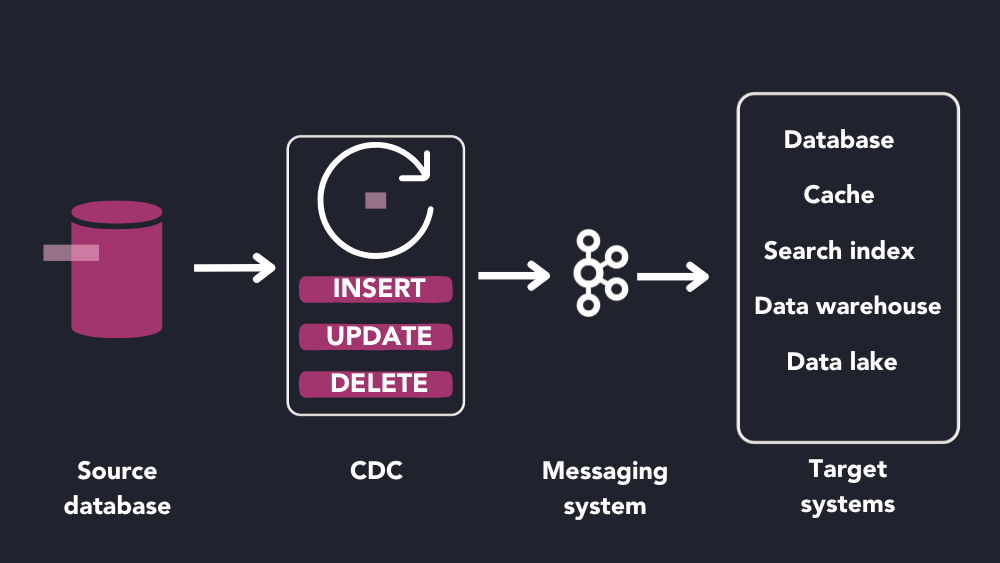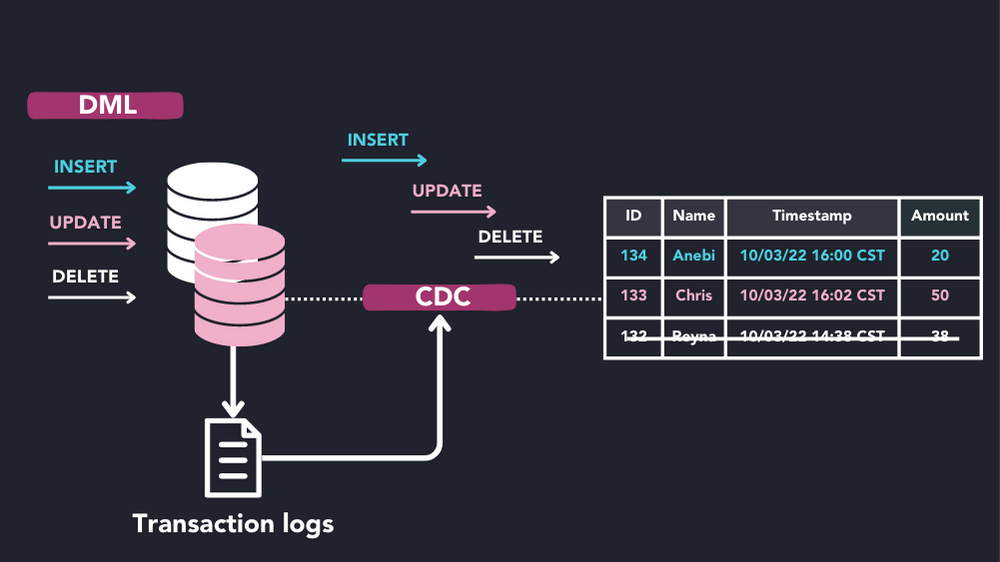Change data capture (CDC) is a data integration technique used to track changes to a data source and deliver those changes to destination systems in real time.
Most commonly, change data capture is used to monitor changes to a source database and propagate those changes to a database, data warehouse, data lake, or event streaming platform.
CDC is useful in situations where data consistency across various systems is important. For example, change data capture systems are heavily utilized for data replication, data migration, and data processing pipelines. Because CDC systems track changes in real time, it preserves data integrity across systems better than solutions that use batch processing.

Use cases and benefits
Unlike batch processing systems that rely on periodic bulk uploads, CDC system’s ability to track changes and sync data in real-time unlocks several use cases:
- Real-time data integration: CDC enables near real-time synchronization of data that can be used for data replication to scale workloads (e.g., adding data replicas) or to increase system availability (e.g., cross-region replication).
- Zero-downtime migration: CDC can support zero-downtime migration between databases, whether it involves moving data from on-prem service to the cloud or from legacy systems to new database versions. CDC can continuously synchronize data during the migration without having to take snapshots or restart the database during upgrades.
- Real-time analytics: CDC is often an integral part of a stream processing pipeline as it can propagate data to multiple destination systems in real-time. The changes in data can then be analyzed in real time for anomaly detection or forecasting models.
- Reliable data exchange: When there is a need to broadcast an update to multiple data stores (e.g., updating a record in a database and also sending it to a messaging system), sending those requests independently can lead to data inconsistencies when one of the systems encounters a failure. CDC prevents this “dual-write” issue by enabling the transactional outbox pattern to trigger updates once writes to one data store have been completed.
- Auditing: Since CDC captures database actions (e.g., insert, update, delete), it has a built-in record of data changes. This can be useful for creating auditing reports for compliance or security purposes.
CDC methods
Underneath the hood, CDC systems implement different strategies to track and capture changes:
-
Audit-column-based: CDC system can monitor an audit column (usually a timestamped field such as
Last Updated TimeorModified Timestamp) to retrieve rows that have been added or updated since the last processing time. This is a simple system to implement, but cannot handle hard delete operations. -
Trigger-based: Most databases support a trigger function where a stored procedure will automatically run when a data manipulation event (e.g., insert, update, or delete) occurs. Using a trigger-based system could simplify the CDC architecture as trigger functions are natively built into the database. However, trigger functions often incur a performance cost and can lead to a management burden as the data format changes.
-
Log-based: The most popular approach to implementing CDC inspects transaction logs that databases utilize for crash recovery or replication means. By parsing these logs, CDC systems can relay these changes to downstream systems. The primary benefit of using a log-based system is that it does not add computational overhead to the source database. It can record all database changes including schema updates from the application, by decoding the logs. However, decoding the transaction log may be complex and requires additional system components outside the database.

Log-based CDC is the most popular CDC method
Popular tools for CDC
There are many change data capture solutions, ranging from open source to commercial services:
- Open-source:
- Open-source with managed offerings:
- Commercial: